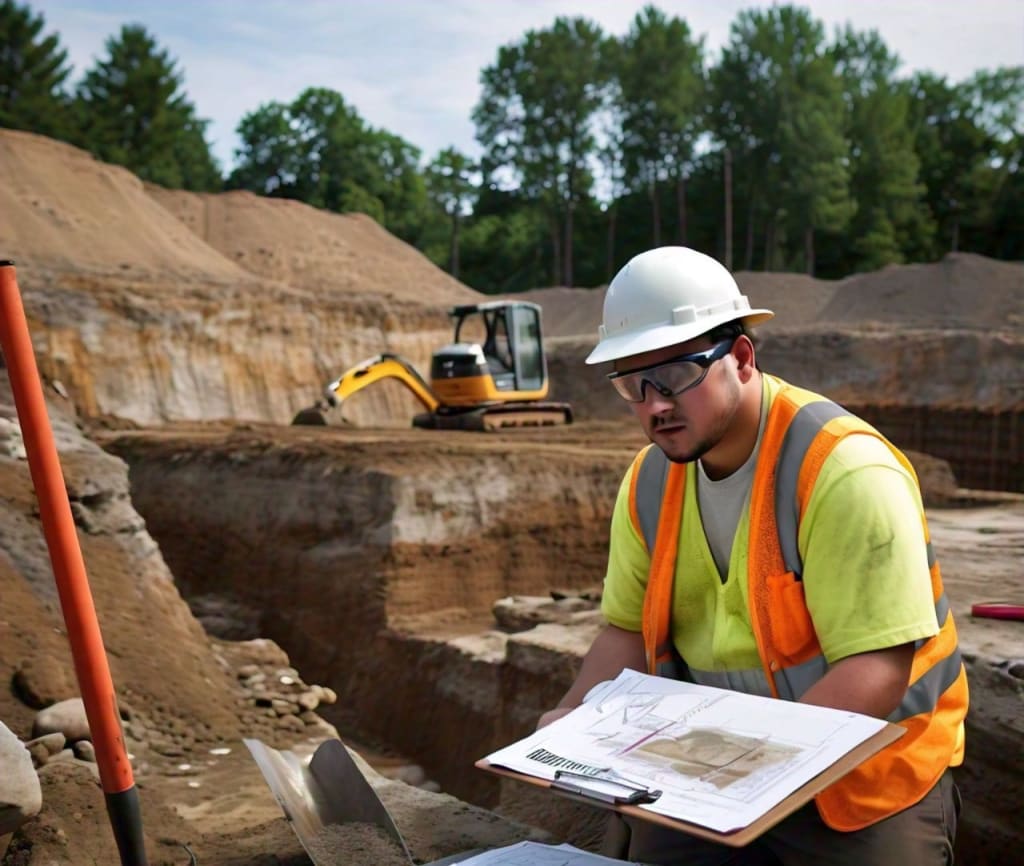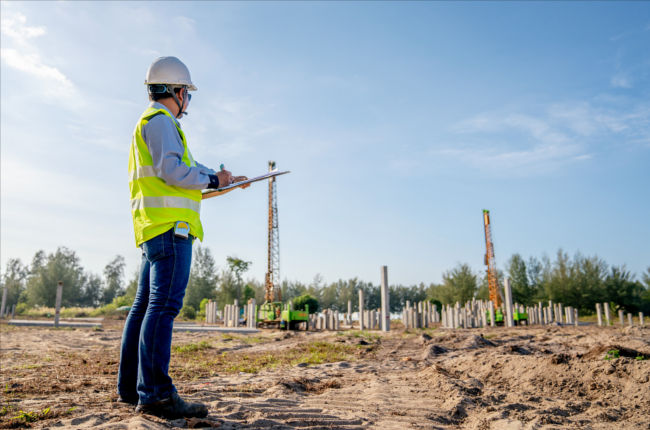Specialized Geotechnical Works for Sustainable Building And Construction Solutions
Specialized Geotechnical Works for Sustainable Building And Construction Solutions
Blog Article
How Consulting Engineers Enhance Geotechnical Engineering Projects: Insights Into Their Knowledge, Methodologies, and Collaborative Approaches
Consulting engineers are crucial in boosting geotechnical engineering projects, using their specialized understanding to browse the complexities of subsurface conditions. Their techniques include a series of website investigation methods, including Criterion Penetration Tests (SPT) and Cone Penetration Tests (CPT), which educate critical choices during the layout and construction stages. Their collective methods foster interaction among varied project stakeholders, inevitably shaping the job's trajectory. As we examine the multifaceted roles these professionals play, it comes to be clear that their contributions prolong past technical expertise, motivating a better look at the ramifications for task success.
Function of Consulting Engineers
The competence of getting in touch with engineers in geotechnical engineering is essential to the effective implementation of construction jobs. These specialists play a pivotal role in examining dirt and rock residential or commercial properties, which are vital factors influencing design and building decisions. By carrying out detailed website investigations, speaking with designers gather essential data that informs the style procedure, making certain tasks are improved stable and suitable ground.
Consulting designers also offer indispensable insights into risk management (geotechnical geologist). They identify prospective geotechnical dangers, such as landslides, dirt liquefaction, and negotiation problems, allowing stakeholders to execute effective reduction approaches. Their experience help in enhancing foundation designs, which can bring about substantial expense savings and enhanced safety and security
In addition, seeking advice from engineers function as a vital web link between project proprietors, designers, and specialists. Their ability to convert complicated geotechnical data right into actionable recommendations cultivates cooperation and promotes notified decision-making throughout the project lifecycle. This multidisciplinary strategy not only boosts job effectiveness however additionally makes certain conformity with regulative standards and finest practices.
Key Methods in Geotechnical Engineering

One key approach is website examination, which involves conducting field tests and lab evaluations to gather data on subsurface conditions. Methods such as Criterion Infiltration Screening (SPT) and Cone Infiltration Testing (CPT) are commonly utilized to examine dirt stratigraphy and toughness. In addition, geophysical approaches, consisting of seismic and electrical resistivity surveys, offer non-invasive ways to examine subsurface features.
An additional essential approach is mathematical modeling, which makes it possible for designers to replicate numerous situations and forecast exactly how soil-structure communications will certainly behave under different loading problems. Finite Component Evaluation (FEA) is a common method employed in this context.
Furthermore, the design of structures, keeping structures, and earthworks counts greatly on these methods - geotechnical geologist. By integrating advanced analytical tools with field information, consulting designers can create tailored solutions that address details task challenges, ultimately adding to the stability and safety of construction tasks
Importance of Dirt Analysis
Soil evaluation offers as a fundamental element in geotechnical design, providing crucial insights right into the physical and chemical residential properties of soil necessary for efficient construction planning. Recognizing soil attributes is essential for identifying its load-bearing capability, drainage habits, and potential for negotiation or instability. Comprehensive dirt examinations, consisting of sampling and lab screening, help recognize specifications such as soil kind, moisture material, thickness, and shear stamina.
These analyses inform the choice of proper building methods and materials, inevitably influencing project safety and long life. As an example, natural dirts may need various structure designs compared to granular soils, requiring customized engineering services. Dirt evaluation help in identifying contaminants that could pose risks to human wellness or the setting, permitting for the development of mitigation strategies.
Incorporating soil evaluation right into the very early stages of job growth assists to reduce unanticipated difficulties, guaranteeing that engineers can prepare for and attend to prospective problems before they rise. By developing a thorough understanding of the site problems, seeking advice from engineers can enhance design performance and minimize prices, therefore improving the total success of geotechnical design tasks.
Collaborative Techniques in Jobs
Successful geotechnical projects often depend upon collective approaches that combine diverse expertise from numerous self-controls. Effective cooperation among getting in touch with designers, geologists, ecological researchers, and construction specialists is important for addressing complicated challenges and enhancing job results. By leveraging the one-of-a-kind abilities and knowledge of each employee, jobs can benefit from an alternative understanding of the website conditions, governing requirements, and design constraints.
Routine communication and interdisciplinary meetings promote the sharing of insights and promote a society of teamwork. These collective efforts enable the recognition of prospective threats early in the project lifecycle, enabling timely mitigation techniques. Additionally, including feedback from stakeholders, including regional areas and governing agencies, makes sure that all viewpoints are considered, improving task approval and conformity.
Additionally, the integration of sophisticated innovations, such as Geographic Info Solution (GIS) and Structure Details Modeling (BIM), more boosts cooperation. These devices enable the real-time sharing of information and visualization of geotechnical conditions, promoting notified decision-making. Eventually, a collective method not only improves project execution yet likewise lays the foundation for innovative services to complex geotechnical design obstacles.
Influence On Job End Results

Consulting engineers use advanced methods such as threat evaluation and anticipating modeling, which improve the precision of job projections. Their capability to integrate ingenious technologies, like geotechnical instrumentation and data analytics, better refines the style and construction procedures. Therefore, tasks experience improved effectiveness, lowered costs, and lessened hold-ups.
Moreover, promoting effective communication and partnership amongst employee boosts problem-solving abilities. When obstacles arise, a united front permits speedy recognition of services, preventing potential problems. Eventually, the joint initiatives of consulting engineers add to better results, making sure that jobs fulfill both governing criteria and customer assumptions.
Conclusion

Report this page